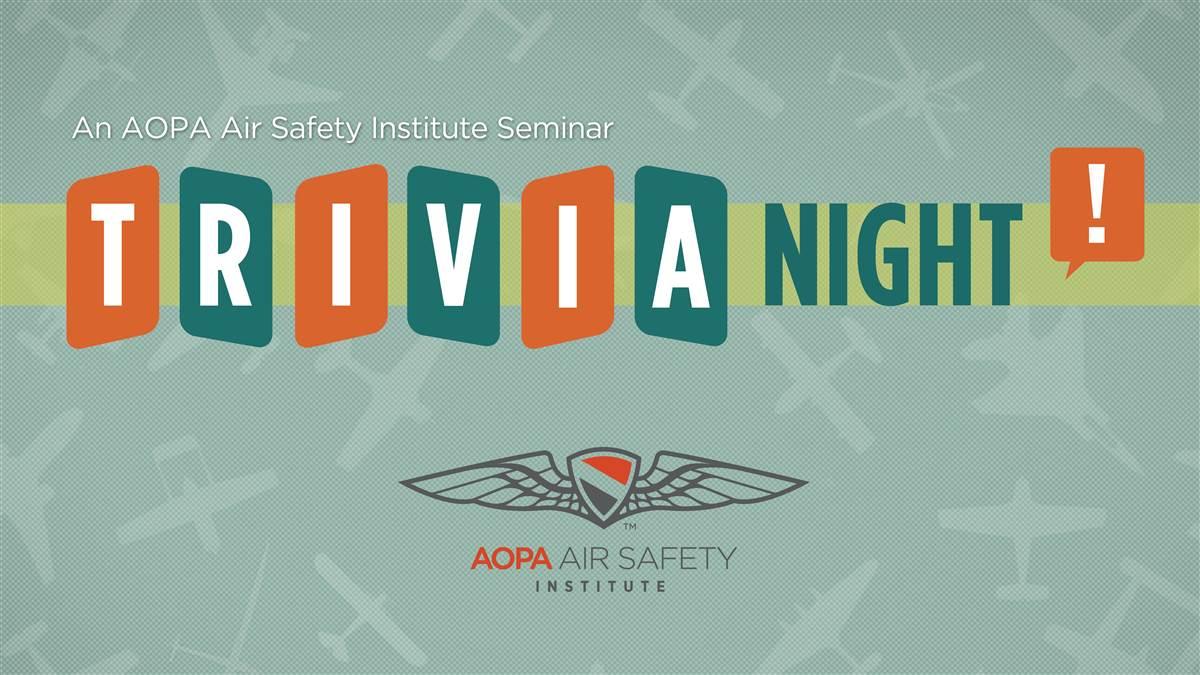Member News & Notes
Flight planning keeps getting easier

The desktop AOPA Flight Planner, powered by Jeppesen, has larger color-coded METAR and TAF icons that draw pilots’ attention to current conditions. Weather icons are easy to see, and the overlay can be zoomed in or out as desired.
The larger icons are particularly useful when planning long cross-country flights, said Eric Rush of AOPA’s flight planning products team, because they provide increased safety and peace of mind. AOPA Flight Planner users can “visualize weather across the entire country” to get a better understanding of their options.
The combined Airports Along Route and the Fuel Along Route overlays integrate with the AOPA Airports directory—allowing pilots to filter airport results along their route based on services or amenities.
“When I am flying long flights that require a stop, I always like to stop at airports that have fuel, a restaurant on the field, a runway at least 3,000 feet long, and some type of instrument approach,” Rush said. “The Airport Filters feature allows me to select what facility options I prefer when I am planning my trip.”
The latest release of the AOPA GO mobile app allows downloaded flight plans to be sent directly to one of the three supported iOS electronic flight bag apps: ForeFlight, Seattle Avionics FlyQ EFB, and WingX Pro7.
“Routes created using the online flight planner can be downloaded to AOPA GO, and then the route can be sent to the EFB app as long as the EFB is installed on the same device as AOPA GO,” Rush said. “It also works offline, as long as users have already downloaded the route.”
The AOPA flight planning products team is currently talking to Android-based EFB developers regarding similar capabilities.
Meet Eric Rush, AOPA Director of Project Management
Eric Rush joined AOPA in 2010. He is the director of the AOPA Project Management Office and also serves as the product manager and team lead for AOPA’s flight planning products. He is a 1,000-hour instrument-rated private pilot and aircraft owner.
Prior to joining AOPA, Rush was employed by a private IT firm that owned and operated a turboprop-converted Piper Malibu. “Flying in the JetPROP was my first exposure to general aviation and was the catalyst for me to get my pilot certificate,” he said. Halfway through private pilot training, Rush purchased a 1979 Piper Archer, which he still owns. Shortly after earning his instrument rating, he started using the aircraft for business travel.
During primary training, Rush’s instructor introduced him to AOPA and the AOPA flight planning tools. “The AOPA Flight Planner was my introduction to AOPA and now being able to lead the technical team is a great honor. We have a dedicated team of developers and partners and we all look forward to the future of the AOPA flight planning tools.”
58% of AOPA members are instrument-rated pilots.
Products and Services/Insurance Services
Do you have enough?
Life insurance is a top priority for pilots
Underwriting a pilot may give many insurance actuaries heartburn; many life insurance policies do not provide aviation coverage at all. Fortunately, AOPA has negotiated a plan that provides aviation coverage with comparable group rates.
Does your family have enough?
Most financial experts agree that life insurance is an important part of financial planning. However, the latest study on Americans and their life insurance coverage shows that many do not have enough to protect their families (Life Insurance Awareness Month, September 2015). While most people see the value in owning life insurance, 30 percent know they need more and 25 percent wish their spouse or partner would purchase some or more.
Why most don’t have enough
The number-one reason most Americans haven’t purchased sufficient amounts of life insurance is that they believe it’s too expensive. On average, people think life insurance costs twice as much as it actually does. Two-thirds of Americans say that cost-of-living expenses (mortgage, groceries, and their electric bill) are keeping them from buying insurance. Additional expenses such as internet, cable, and cellphone service are preventing 50 percent of Americans from purchasing life insurance.
A financial disconnect
Many people say they are worried about paying for living expenses and saving for retirement. They say they are less concerned with how their spouse or loved ones will get by financially after they are gone. Yet, in fact, half of households say they’d feel the financial impact of the primary income earner’s death within a year or less. More than 40 percent would feel the impact within six months, including nearly 40 percent of households with annual income of $100,000 or more.
An affordable solution for AOPA members
If you have loved ones who count on your income and support, you need to make sure you have enough life insurance coverage to help pay for your family’s everyday living expenses and keep their financial goals attainable. Although you may have coverage provided by an employer, it may not cover you while you are flying. It’s important to have supplemental coverage to protect your family. Without enough coverage, surviving loved ones may have to sell the family home, forego college education, take out loans, or work longer into retirement to offset the lost income.
The bottom line: Find an affordable, stable, and trustworthy resource you can rely on. Remember that your loved ones depend on you and your support—so make it a top priority to make sure you have enough life insurance. There are many resources you can turn to for help: You can ask insurance sales agents, ask trusted friends or family, or go online to find and compare plans. As an AOPA member, you have another resource: AOPA Insurance Services. For more information, visit aopainsurance.org/life or call Mercer Consumer, the plan administrator, toll-free at 844-304-AOPA (2672).
AOPA FOUNDATION/Air Safety Institute
Don’t make the same mistake twice
Reflection brings clarity, improvements
Whether we question a choice that didn’t work out as hoped or analyze a mistake made during a flight, contemplating our actions after the fact may prevent us from making the same mistake twice.
The AOPA Air Safety Institute (ASI) supports this notion with safety programs based on lessons learned, such as Accident Case Studies and Real Pilot Stories. ASI’s accident analysis also plays a critical role in the examination of specific general aviation accidents that the GA industry aims to reduce. Meanwhile the industry spurs improvements by trying new things.
For example, AOPA, the FAA, and the National Transportation Safety Board (NTSB) recently partnered to present a seminar intended to reduce GA mishaps resulting from loss of control (LOC). LOC accidents are often fatal, accounting for about 40 percent of GA fatalities, according to the NTSB.
ASI Senior Vice President George Perry updated seminar attendees on two safety initiatives in development: a high-quality, targeted flight review and a study of the benefits of adopting a circular airport traffic pattern as an alternative to the traditional box-shaped pattern. These initiatives are joint industry efforts. The first is a coalition between AOPA, the Experimental Aircraft Association, the National Association of Flight Instructors, the Society of Aviation and Flight Educators, and the FAA Safety Team; the second between AOPA and the University of North Dakota.
According to Perry, the flight review initiative will deliver a curriculum that focuses on accident prevention. The circular pattern design leverages known best practices and techniques used throughout other aviation sectors to fly safer in the landing phase of flight.
Stay tuned for updates on these safety initiatives.
Remember: ‘Fly the airplane!’
During initial flight training pilots learn the four opposing forces acting on an aircraft in straight-and-level, unaccelerated flight: thrust, drag, weight, and lift. As long as the aircraft remains in steady, straight flight, these forces will remain in balance, according to Newton’s Third Law—which states that for every action or force there is an equal, but opposite, reaction or force.
A good refresher on this topic is your airplane’s POH and a checkout with a qualified CFI who knows your airplane. Also, an excellent visual tool is the AOPA Air Safety Institute’s new video, Engine Out! From Trouble to Touchdown. It reviews the immediate steps to take for the best chance of a successful outcome. The video also covers various engine-out scenarios during takeoff and at altitude, and your best choices for a landing site. Learn to reduce the risk of an engine failure through proper engine monitoring, maintenance, and fueling tips. Know what matters when you need to tackle an engine-out dilemma in a single-engine airplane—whether under relatively benign or tricky circumstances.
Video made possible by the Canadian Owners and Pilots Association (COPA) Flight Safety Foundation and Donner Canadian Foundation.
Web: airsafetyinstitute.org/safetyvideos/singleengineemergency
Member Benefits
You Can Fly
AOPA scholarships top $156,000
Know a young person passionate about aviation? AOPA is offering more than 40 scholarships this year worth more than $156,000 through three different programs: AOPA AV8RS teen membership, the AOPA You Can Fly High School Flight Training Scholarship, and the AOPA Foundation Scholarship.
“AOPA’s scholarships are a great way to simultaneously grow the pilot community and teach young people the responsibility and skills that lead to careers in aviation and aerospace,” said Cindy Hasselbring, AOPA senior director of the high school aviation initiative.
The You Can Fly High School Aviation Scholarship program will award 20 flight training scholarships to teens ages 15 to 18 (AOPA membership is not required).
The AOPA AV8RS Scholarship will award up to four scholarships totaling $15,000 to deserving members of AOPA’s AV8RS program, a free membership for teens ages 13 to 18. The scholarships will go to individuals pursuing an aviation-related goal, including a primary pilot certificate, study in an aviation or aerospace field through an accredited aviation program, or attending an aviation or aerospace camp.
The deadline for both the You Can Fly High School Flight Training Scholarship and the AOPA AV8RS Scholarship is September 30.
The AOPA Foundation scholarships are awarded to passionate AOPA members in their efforts to earn an initial pilot certificate. The deadline was July 7.
Web: http://youcanfly.aopa.org/scholarships
Tips from PIC
Is it worth it?
Let us help you with prepurchase inspections
By Tom Zecha
Pilots looking to buy a used aircraft often wonder if a prepurchase examination is worth the cost. It is. A prepurchase inspection is not necessarily an annual inspection, and nothing in the FARs states what it should cover. It’s up to the individual buyer to decide how in-depth it should be, and how much he or she is willing to spend. The objective is to examine the aircraft for damage and wear that might not be evident, and to form an educated guess as to future maintenance needs.
Have the exam performed by a mechanic experienced with that particular make and model. He will know where to look for potential problems, as well as the most common and serious failure points. Try to find a mechanic with no prior relationship with the aircraft or the seller, and who is located within a reasonable distance. A new website, Fly Mechanic, can help you locate one.
Ask the mechanic not to look for the inexpensive discrepancies or nonairworthiness-related items that will not affect the purchase decision or impact the sale price.
Do ask him to stop if he finds an expensive repair item, so you can discuss it with the seller—who may agree to pay to have it fixed, or may choose to walk away from the deal. If the seller agrees to correct, the prepurchase exam can resume.
Once the exam is finished, and the buyer has decided to purchase the aircraft, converting the prepurchase into a full annual inspection is often cost-efficient.
Tom Zecha is a 7,000-hour commercial pilot and CFI. He has worked with AOPA for more than 10 years.
NOTICE OF ANNUAL MEETING OF MEMBERS. The annual meeting of the members of the Aircraft Owners and Pilots Association will be held at 9 a.m. on Friday, September 9, 2016, at the headquarters of AOPA, 421 Aviation Way, Frederick, Maryland, 21701, located on Frederick Municipal Airport (FDK), for the purpose of receiving reports and transacting such other business as may properly come before the meeting, specifically including the election of trustees. If you are not able to attend, but would like to appoint your voting proxy, please go online or call 800-872-2672. —Kenneth M. Mead, Secretary
ANSWERS FOR PILOTS
Certification with hypertension
By Kathy Dondzila
Many members call or email AOPA with questions and concerns about hypertension. Some fear that their elevated blood pressure will make it difficult or complicated when they renew their airman medical certificate.
Relax. Gone are the days when pilots with hypertension needed a special issuance authorization for a medical certificate. Now your aviation medical examiner can issue a medical certificate in the office for airmen with hypertension under a program called CACI (Conditions AMEs Can Issue).
No electrocardiogram or laboratory work is required—just a simple, downloadable hypertension worksheet completed by your treating doctor that shows you are taking appropriate medication and your blood pressure is in good control. You must not be taking more than three blood pressure medications, and your blood pressure reading must not exceed 155/95.
The worksheet provides both your treating physician and your AME with a checklist of information needed for in-office certification. You bring that completed worksheet with you to your AME, who will confirm that everything on the worksheet meets the FAA guidelines, and then can issue your medical certificate to you in the office at the time of the exam.
To find the hypertension worksheet, search for hypertension on www.aopa.org.
Questions? Give AOPA a call at 800-USA-AOPA (872-2672) Monday through Friday, 8:30 a.m. to 6 p.m. or email [email protected].
Kathy Dondzila is AOPA technical communications manager and an instrument-rated private pilot.
Pilot Protection Services/Medically speaking
Be prepared
Protect yourself with medical documentation
By Gary Crump
If you have been contacted by the FAA’s aerospace medical certification division in the past, or you are currently in the revolving door of back-and-forth exchanges, you will appreciate the profound frustration of the process in its current state.
The FAA has not had a steady funding stream through an authorization bill created by Congress for many years. In fact, we are in the midst of another in the long series of short-term funding bills that was scheduled to end July 15—after which, without either the passage of a reauthorization bill or another short-term funding bill, the FAA bank will run dry. Inefficiency in processing—such as what we are currently seeing with deferred medical applications and special issuance recertification—is one of the many beneficiaries of this government oversight.
The key reason AOPA is fighting for third class medical reform is the chronic inability of the FAA to conduct timely review and issuance of medical certificates to airmen. Granted, 97 percent of medical certificates are issued to pilots by their aviation medical examiner (AME) at the time of the FAA physical exam. However, that is little solace for the 30,000 or so airmen each year who are deferred or initially denied certification. The message we try to convey to members is to be armed with the information your AME needs to make an informed decision about issuing your medical or deferring it to Oklahoma City.
Documentation is the key, so in many cases a visit to your treating doctor to obtain a status letter regarding any treatment you had that may raise questions on your medical application is critical. AOPA has a dedicated staff of medical certification specialists in the Pilot Information Center who can guide you through this maze of bureaucracy—preferably before you get caught in it.
Gary Crump is the director of medical certification for the AOPA Pilot Information Center. He has been a private pilot since 1973 and has worked with AOPA for more than 28 years.




